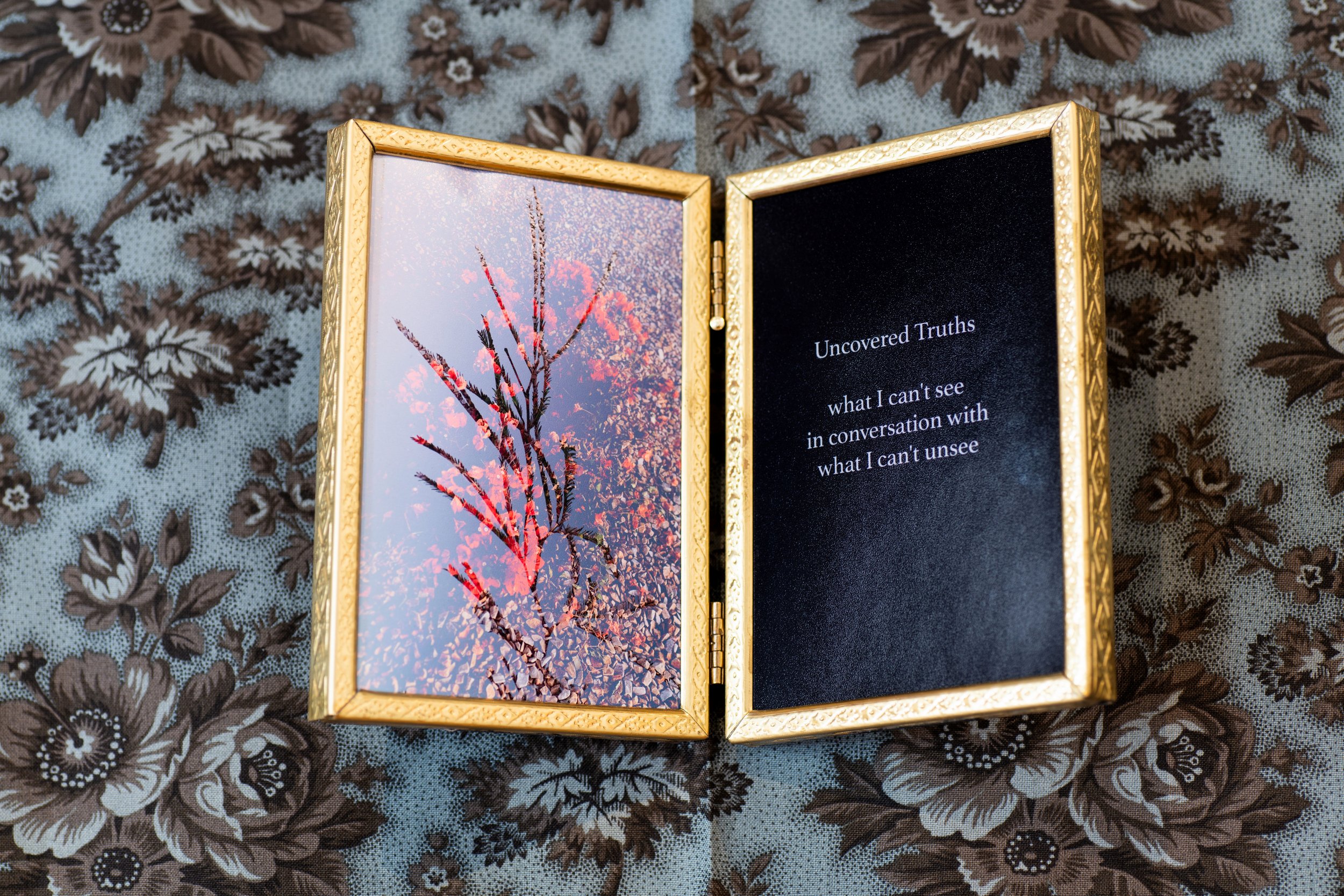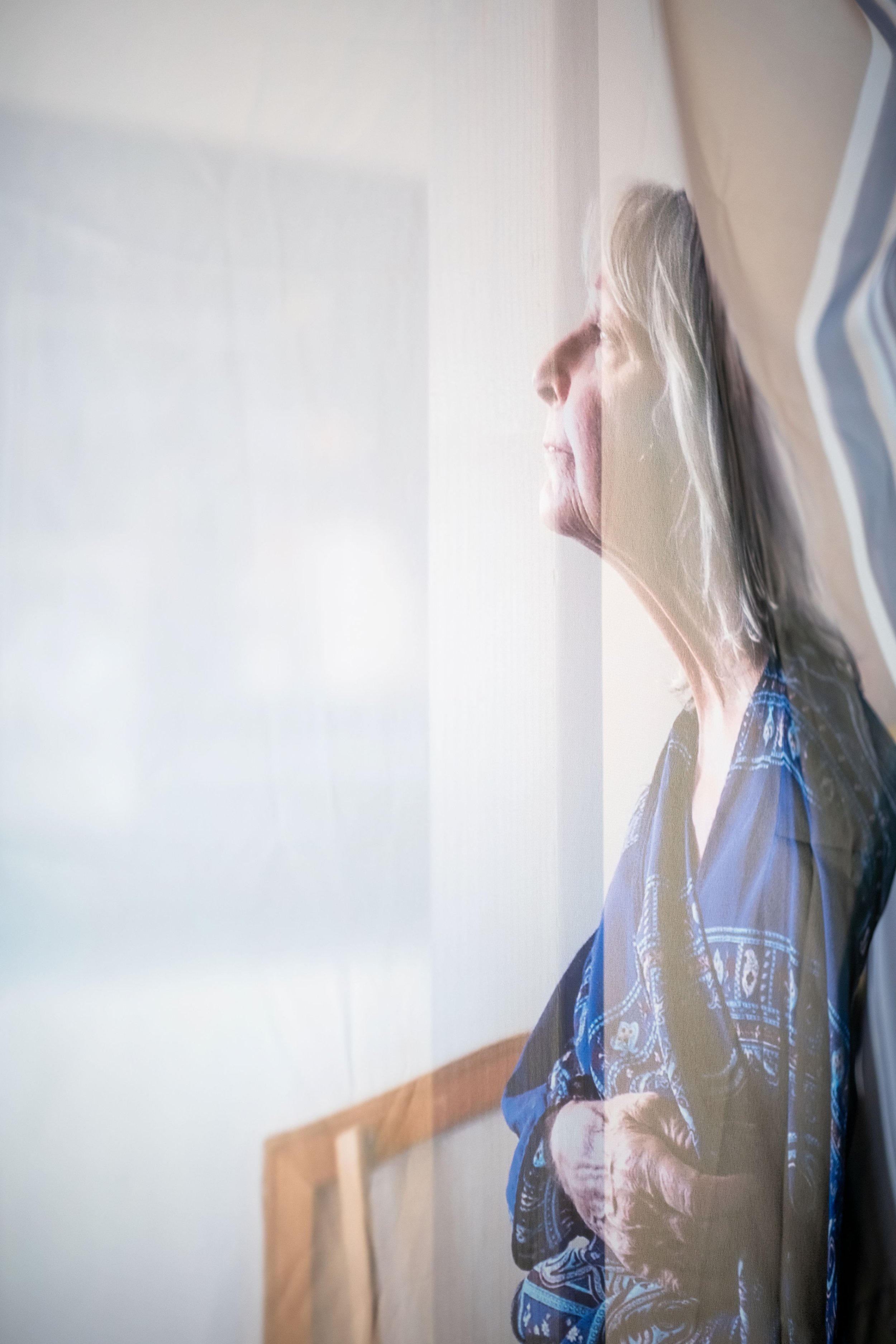
Transitioning Under the Neon Glow
In neon, burning through the darkness of a gallery after hours, the trans pride flag glows in stasis. On its wood mounting, you can read by its light hand-scribbled notes–reminders, complaints, an inventory–of an experience of transition.

Methods for Finding Your Way Home
Gilded frames, a mustard yellow chair, the glow of a range hood light in the evening, the shine of golden blonde hair, and a nest of Palo Verde flowers. The spattering of yellow carries you through the fragmented images of the main gallery space as you explore the two-person exhibition, Finding Home.

“Of Sound Mind” Converts Audio to Visual Using Transcendental Illustrations
Of Sound Mind, Alison Auditore’s now-closing exhibition, is a visual testimony about music’s profound impact on the artist – to the synesthete’s delight. Her work gives shape to booming rhythms and flights of melody, intimately sharing what happens within herself when the music takes her.

Memories of Home, Real, Constructed, and Imagined
Finding Home as a theme is immediately complicated by the wall frame structure you are confronted with when you enter the gallery. You can look around and see photographs of moments captured, vintage photos of more distant memories–a general sense of nostalgia. Taken independently, you would think of finding home as an excavation, a rediscovery. But the wall frame invokes construction. Making home vs. finding it.

Lali Khalid Challenges Who Gets to Represent Whom
When Lali Khalid tossed her dupatta into the air for a shoot, she was approached by Americans who commented on her work, thinking that she was making images in rebellion against what they believed to be her oppression as a Muslim woman. But she was also fighting against “the oppressed version of me that exists in her head.”

The Sanctity of Summer Raine Young’s June Mornings
Young may be surprised to see me latch onto the religious definition of sanctuary instead of the more common, colloquial sense of the “safe haven” they include in their statement. But any good personal sanctuary is, at the root of it, religious in the broadest sense, where one can commune with oneself and those they love. The home–the hearth–is a place of worship.

Intimations on Kat Davis’ Excerpts
I must disclose that I am not a passive observer of this work. As Kat’s partner and spouse, I’ve seen them at work. But this is not to say that I am writing as the artist’s spouse; it is not my intimacy with Kat that has inspired this essay, but my intimacy with the work. I’ve been initiated into something arcane, watching intently as Kat manipulates moments to create new histories.

Art Criticism as Annotation
I’m new to art criticism. I’ve written various forms of creative nonfiction and prose poetry in the past, and so I rely on these methods when writing art criticism. And while my style has changed marginally, the ethos remains the same–it’s the ethos of annotation.
